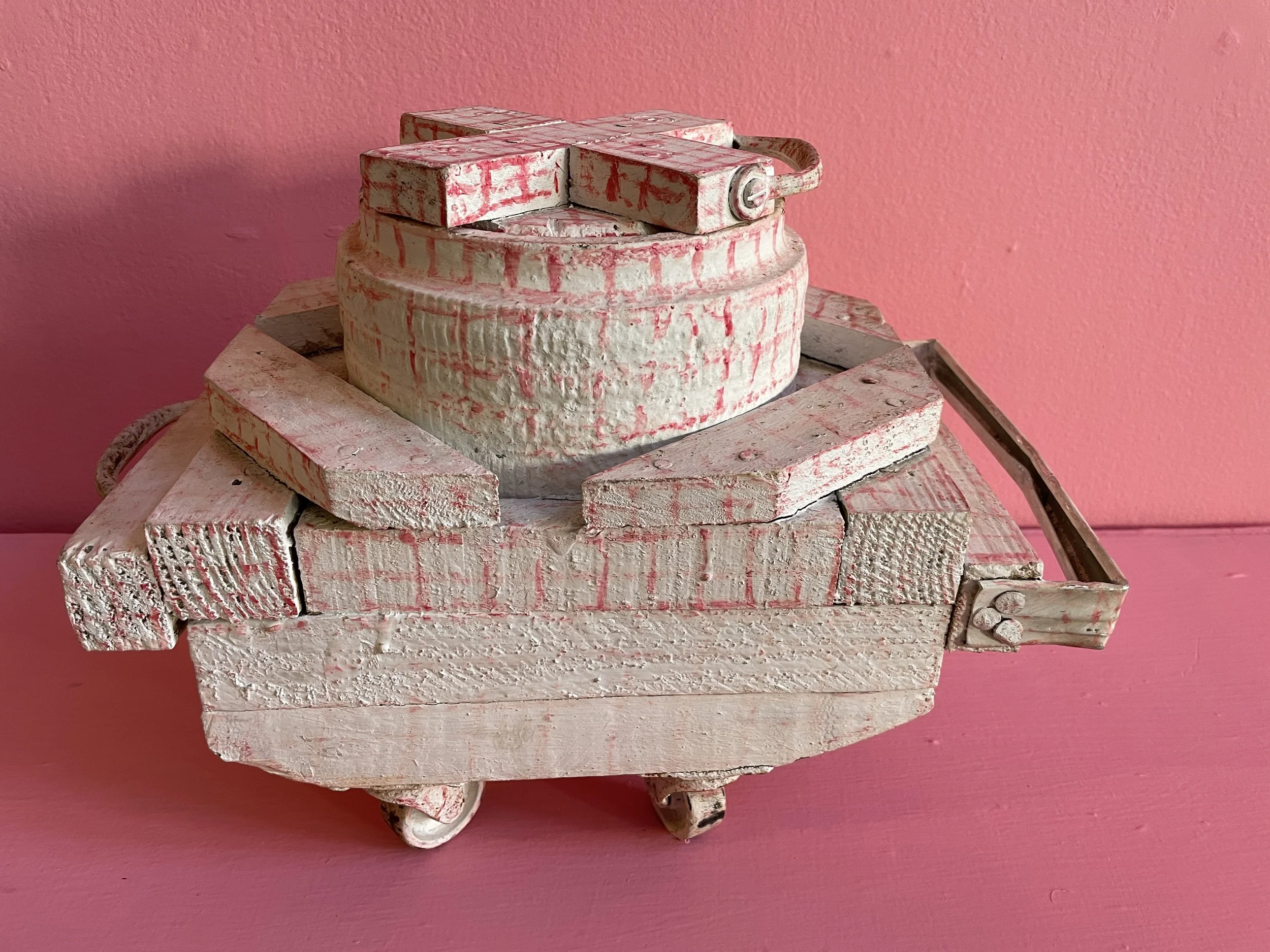We never knew Zebedee Armstrong, but have always been drawn to his work. We are excited to open a large survey of his pieces February 13th, 2022. Below is a wonderful biography of Zebedee written by our friend, Louanne LaRoche.
Zebedee Armstrong (‘ZB’) was born in 1911 in McDuffie County, Georgia, and lived in the town of Thomson, near Atlanta. He attended school until the eighth grade, married Ulamay Demmons in 1929 and with her raised two daughters. He spent most of his adult life picking cotton on the same large commercial farm his father had worked.
Cotton generated the bulk of McDuffie County’s wealth from the nineteenth to the mid-twentieth century. It was amongst the most productive cotton land in the state, and both slave culture and cotton production flourished. At the turn of the twentieth century sixty per cent of the population was African American.
Those who remained inherited many traditions. The ‘hush harbors’ of antebellum America, where slaves gathered in secret to worship and to sing religious spirituals, laid the foundations for more experiential forms of worship. Churches and praise houses were the core of Armstrong’s community.
A religious man, Armstrong was a member of The Solomon-Hodges Burial Society, to which he contributed weekly dues. This organization provided vital family assistance and death benefits, including helping members save money for burial markers.
From an early age Armstrong had shown a talent for constructing furniture, encouraged by his father, who gave him nails and bits of wood to use. He built a variety of lockable wooden and concrete safes to house the burial savings, as the collapse of the Freedman’s Bank in 1874 and the Depression of 1929 had led to a general distrust in banks. These safes contained drawers with compartments, a variety of latch locks and handles, and often wheels.
Soon after his wife’s death in 1969 Armstrong went to work as a foreman in a local box factory and supplemented his earnings there by constructing benches, tables and cupboards. Three years later he had a transforming vision in which an angel appeared before him proclaiming God’s message that ‘Our time has gone to waste… judgment day will come and what hour only He [God] knows.’
After this experience Armstrong became reclusive and preoccupied with time, the Book of Revelation and the making of elaborate calendars designed to predict the exact time and date of the Day of Judgment. These would transform, nourish, define and testify to his faith and pointed out the direction an Individual’s personal and spiritual lives should take. Armstrong produced over 1,500 works, creating them in series and refining his formats.
The calendars consist of complex pathways and grids drawn in black, red and blue permanent marker and encircling his constructions. Armstrong called this effect ‘taping with time’. This linear wrapping or winding connects him to Afrocentric traditions. The process is meditative and illuminating, and in the process he apparently left his everyday state of mind, transforming his structures into spiritually charged icons.
Any found object, from a rubber band to a mailbox, fitted Armstrong’s vision and he was often seen scavenging in the streets pulling along a wooden box in which to put his finds. He constructed boxes, lids, compartments, inserts and handles, adding to the dimensions and making irregular surfaces and angles. Some of the components he used are circular or clocklike and he often included dials and notched pegs to mark the passing of time.
Many of the objects are painted white and then transformed with words or abbreviations giving directions. He marked the top, bottom, side, front and back and he labeled inside, outside and on each insert or component. Months, days, years, both written and numbered, are wrapped methodically.
The visual power of this technique is astonishing. There is no disconnection, no beginning, no end. Armstrong ritually wove his marks, integrating past, present and future into the here and now.
After he retired in the early 1980s Armstrong was able to focus his full attention on his creative output. He lived and worked in his hand-built, two-room wood-framed house. A throne-like white wooden platformed chair sat on the front porch. He owned neither television nor radio, but the front room contained a gramophone and several dozen blues recordings, many of which featured another of Thomson’s native sons, Blind Willie McTell, with whom Armstrong occasionally travelled during the thirties and forties. Near the bedroom door was an assemblage stacked with pads of discarded bank forms and vessels housing desk supplies. The walls were hung with commercial calendars and clock faces.
The inner room was Armstrong’s sanctuary and a place to work. It was intimate and filled with spiritual significance. On the mantelpiece stood a box with compartments containing cards to manually change the labelled days, months and years. A large table held dozens of carefully stacked components including a lamp, torches, medicine cups and a variety of other vessels, each transformed by Armstrong’s marks. His shoes were carefully arranged under his bed. The walls were saturated with his flat cardboard calendars and timepieces. A kitchen area in the room was filled with clusters of his constructions, in amongst them jars of peaches, okra and beans.
Around the back of the house was a garden with shade trees. This was Armstrong’s outside work area, where a tree stump and handmade bench served as a place to produce his assemblages.
Zebedee Armstrong sadly lived his last year in a nursing home and passed away in 1993 at the age of 82 leaving behind a intriguing and bold body of work with “taped with time” represented his vision and the passing of his time which was not wasted at all.

























